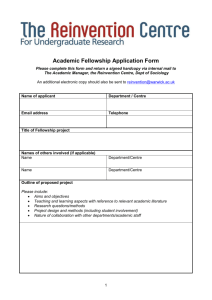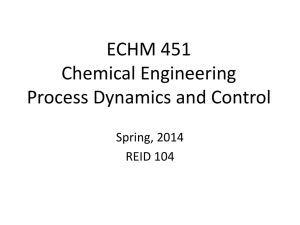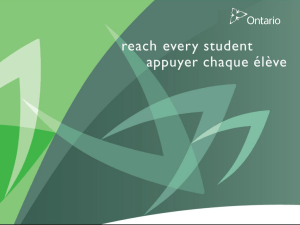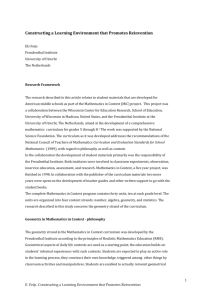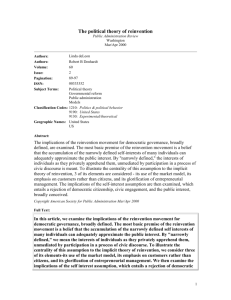Guided Reinvention
advertisement
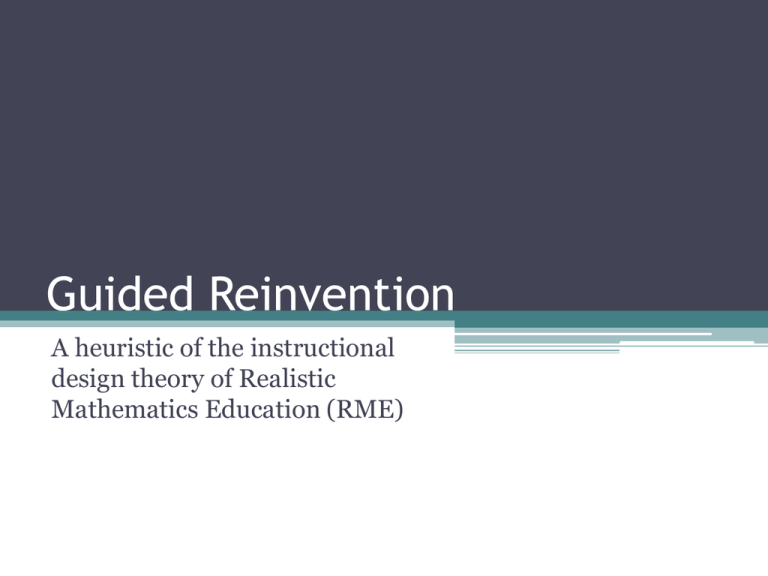
Guided Reinvention A heuristic of the instructional design theory of Realistic Mathematics Education (RME) What is RME? • Realistic Mathematics Education (RME) is an instructional design theory which centers around the view of mathematics as a human activity (Freudenthal 1991) • “The idea is to allow learners to come to regard the knowledge that they acquire as their own private knowledge, knowledge for which they themselves are responsible.”(Gravemeijer 1999) Why RME? • Most mathematics courses are taught by presenting the mathematics as a finished product; traditionally in a definition-theorem-proof (DTP style), and then perhaps some examples • In other words, most courses are taught by stating the general and then moving to more specific ideas to demonstrate the point • Freudenthal, one of the pioneers of RME, argues that mathematics tends to develop the opposite way in the minds of individuals, from the specific to the general case • Lakatos, in his 1976 book Proofs and Refutations, claims that a finished product, DTP teaching style masks the process by which the material was discovered Three Tenets of RME • Cobb (2000) gives three central tenets of Realistic Mathematics Education: ▫ Starting points of the instructional sequence should be ‘experientially real’ to the students (hence the name realistic mathematics education) ▫ Starting points should be justifiable in terms of the potential ending points of the sequence ▫ Instructional sequences should contain activities in which students create and elaborate symbolic models of their informal activity Guided Reinvention Projects • Primary goal: To develop a local (i.e. domainspecific) instructional theory that will allow students to “[invent] the mathematics themselves” (Larsen 2004). This involves a two-part process: ▫ Step 1: “students are engaged in activities designed to invoke powerful informal understandings” (Weber & Larsen, 2008) ▫ Step 2: “students are engaged in activities designed to support reflection on these informal notions in order to promote the development of formal concepts” (Weber & Larsen, 2008) this is part of the process of mathematization, defined on the next slide Emergent Models • Emergent models are used in reinvention projects to support the development of formal mathematical knowledge from a student’s informal knowledge (Gravemeijer 1999) • Mathematization, the mathematical organization of ideas, is one such way that a student’s informal knowledge may be adapted into formal mathematics • Model of / model for: at first, the model should emerge as a model of the activity of the student in an experientially real situation, and then evolve into a model for more formal mathematical activity (Gravemeijer 1999) ▫ think: referential activity to general activity (Larsen 2004) Proofs and Refutations as a framework for reinvention • Larsen and Zandieh (2007): “Proofs and Refutations in the Undergraduate Mathematics Classroom” • Idea: connect the ideas of Lakatos (1976) with the idea of guided reinvention set forth in Freudenthal (1971) ▫ Methods of mathematical discovery described by Lakatos: Monster-barring: reject counterexamples as invalid Exception-barring: modifying the conjecture to exclude counterexamples proofs and refutations/proof analysis: modify the conjecture so that the ventured proof “works” Some Noteworthy Reinvention Projects Abstract Algebra • Larsen (2004): students reinvent the concepts of group and group isomorphism • Larsen (2010): students reinvent the concepts of coset and quotient group Analysis • Martin (2010): students reinvent the formal definitions of series and pointwise convergence A Primary Criticism of Guided Reinvention • Impractical in the classroom setting to have such a favorable teacher to student ratio and to devote so much time to these tasks ▫ Addressed in Larsen (2009): “I must acknowledge that it is in general not practical in a group theory course to provide nearly 14 hours of instruction, with a one-to-two teacher-student ratio, simply to arrive at the definitions of group and isomorphism. Nevertheless, this kind of in-depth work with a small number of students can support the development of an instructional theory that can in turn be used to design curriculum that can be practically implemented in an undergraduate classroom.” Specific Advantages of Larsen’s Reinvention of Group and Group Isomorphism • Larsen’s 2004 study actualizes several recommendations from the literature on learning abstract algebra: ▫ Iannone and Nardi (2002) detail the many errors to which students are prone when ignoring the binary operation/group structure ▫ Weber (2004) reported that many undergraduates possess the syntactic knowledge needed to construct proofs, but lack the strategic knowledge Example: his students first attempted to define a bijection when proving two groups were isomorphic instead of focusing on the more important “structure-preservation” construct ▫ Leron (1995) suggested developing an intuitive notion of isomorphism before revealing the formal definition Why I am interested in reinvention • My favorite math course of all time – high school geometry – was taught in a reinvention-type format • When I started graduate school, I struggled in the qualifier courses (taught in DTP format) because I didn’t have the intuitive feel for the material • Because I like teaching so much, the idea of working closely with a small number of students appeals to me • Reinvention is much closer to how actual mathematicians do research
